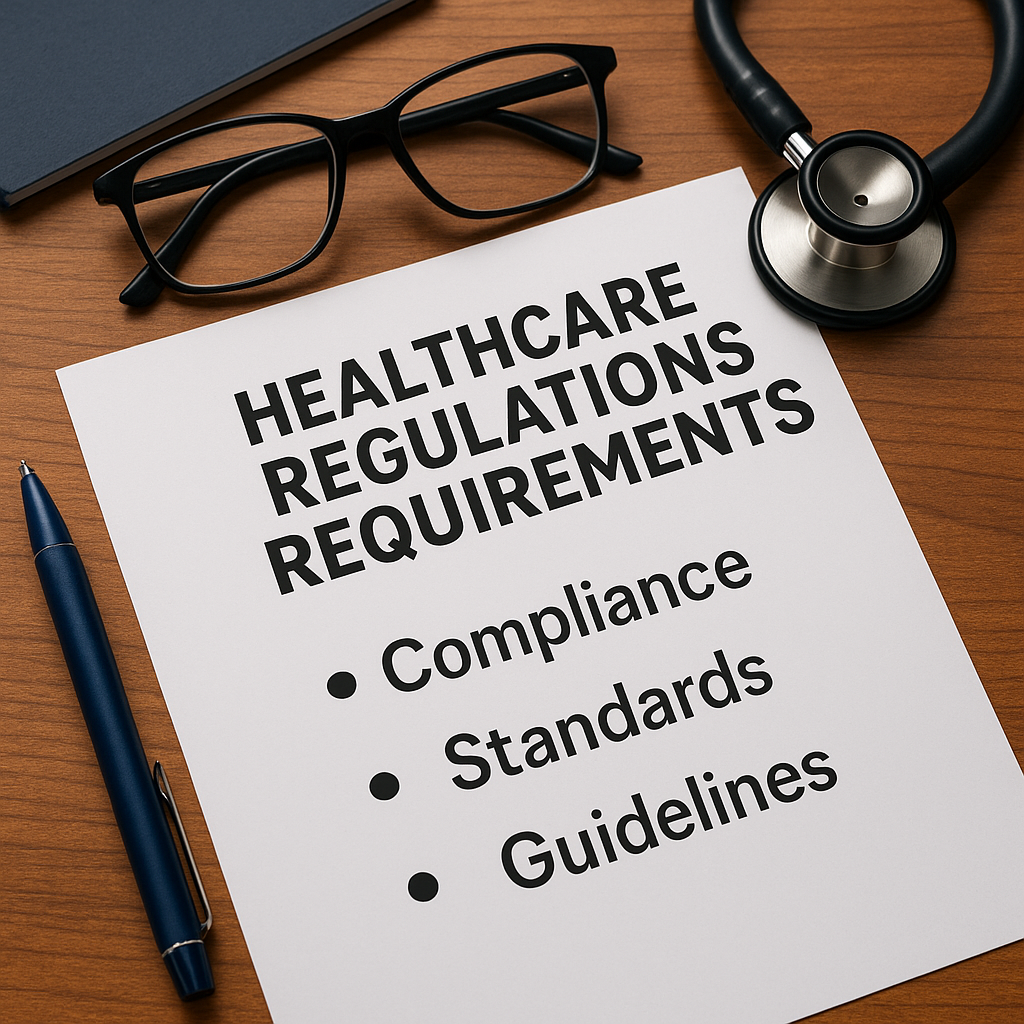
The Future of Medical Transcription: Trends to Watch in 2025
April 1, 2024
The Impact of Remote Work on the Medical Transcription Industry
June 8, 2024As the healthcare industry evolves, so too does the regulatory landscape surrounding medical transcription. Recent changes seek to address the increasing complexity of medical documentation while ensuring top-tier standards for accuracy, security, and legal compliance. Here’s a rundown of the latest regulations in medical transcription that healthcare providers need to be aware of.
1. Stricter Data Privacy and Security Requirements
Recent regulations emphasize the protection of patient data in medical transcription. Healthcare providers must adhere to stricter data privacy standards, including:
• Enhanced Encryption: All electronic health records (EHRs) and transcription files must be encrypted both in transit and at rest.
• Access Controls: Providers need to implement robust access controls to prevent unauthorized access to patient information.
• Scheduled Security Audits: Periodic security assessments are required to confirm adherence to data protection protocols and uncover any system vulnerabilities.
2. Compliance with the General Data Protection Regulation (GDPR)
For healthcare providers operating in or dealing with patients from the European Union, compliance with the GDPR is crucial. Key requirements include:
• Patient Consent: Explicit consent from patients must be obtained before processing their personal health information, including for transcription services.
• Right to Access and Erasure: Patients can request access to their records or have them deleted. Providers must have clear procedures—such as secure request portals or designated compliance teams—in place to manage these inquiries efficiently.
• Data Protection Officers (DPOs): Organizations that handle large-scale data processing may be required to appoint a DPO responsible for overseeing GDPR compliance strategies.
3. Adherence to the Health Insurance Portability and Accountability Act (HIPAA)
In the United States, HIPAA remains a cornerstone of medical data regulation. Recent updates include:
• Breach Notification Requirements: Providers must report data breaches within 60 days and inform affected patients accordingly.
• Business Associate Agreements (BAAs): Transcription vendors must maintain formal BAAs with healthcare providers to ensure responsibilities for safeguarding health information are legally established.
• Increased Penalties: Non-compliance with HIPAA now carries heightened financial penalties, making strict compliance more important than ever.
4. Implementation of Artificial Intelligence (AI) Standards
With the rise of AI in medical transcription, new regulations are being introduced to govern the use of AI technologies:
• Transparency: AI transcription platforms must offer traceable documentation of how they produce outputs, including details on decision-making algorithms where applicable.
• Bias Mitigation: Developers are required to design AI systems that detect and correct for biases—ensuring equitable transcription accuracy across diverse populations and dialects.
• Accuracy Monitoring: Providers must implement real-time performance tracking to regularly assess AI transcription reliability and address inconsistencies promptly.
5. Standardization of Transcription Practices
To ensure consistency and quality, new regulations are focusing on standardizing transcription practices:
• Formatting Guidelines: Providers must follow established documentation formats—such as those outlined by HL7 CDA standards or EHR vendor protocols—to improve interoperability and ease of use.
• Quality Control: Ongoing evaluation procedures are required to ensure transcription accuracy, including spot checks, peer reviews, or third-party validation audits.
• Training Requirements: Medical transcriptionists must pursue continuing education and recertification to stay current with legal, technical, and clinical standards.
6. Telehealth Documentation Regulations
With the growth of telehealth, specific regulations have been introduced to address transcription practices in remote consultations:
• Remote Access Security: Secure login systems and encrypted transmission methods are essential for accessing and storing telehealth records.
• Documentation Standards: Transcripts of virtual consultations must comply with the same regulatory frameworks that govern in-person visits, such as HIPAA or Joint Commission documentation requirements.
Conclusion
Staying abreast of new regulations in medical transcription is essential for healthcare providers to ensure compliance and protect patient data. By aligning with enhanced data protection laws, incorporating responsible AI usage, and following formalized documentation protocols, providers can confidently meet modern regulatory demands while continuing to deliver precise and secure medical records.

Sources and References
U.S. Department of Health & Human Services – HIPAA Security Rule Guidance: https://www.hhs.gov/hipaa/for-professionals/security/guidance/index.html
U.S. Department of Health & Human Services – Breach Notification Rule: https://www.hhs.gov/hipaa/for-professionals/breach-notification/index.html
U.S. Department of Health & Human Services – Sample Business Associate Agreement Provisions: https://www.hhs.gov/hipaa/for-professionals/covered-entities/sample-business-associate-agreement-provisions/index.html
Electronic Code of Federal Regulations – 45 CFR § 164.312 (Technical Safeguards): https://www.law.cornell.edu/cfr/text/45/164.312
European Union – General Data Protection Regulation (GDPR): https://gdpr.eu/
GDPR Article 17 – Right to Erasure: https://gdpr.eu/article-17-right-to-erasure/
GDPR Article 37 – Data Protection Officers: https://gdpr.eu/article-37-designation-of-the-data-protection-officer/
National Institute of Standards and Technology – AI Risk Management Framework: https://www.nist.gov/itl/ai-risk-management-framework
Health Level Seven International – HL7 CDA Standard Overview: https://www.hl7.org/implement/standards/product_brief.cfm?product_id=7
U.S. Department of Health & Human Services – Telehealth HIPAA Guidance: https://telehealth.hhs.gov/providers/policy-changes-during-the-covid-19-public-health-emergency/telehealth-privacy-and-security
The Joint Commission – Telehealth Standards FAQ: https://www.jointcommission.org/standards/standard-faqs/behavioral-health-care-and-human-services/telehealth/

